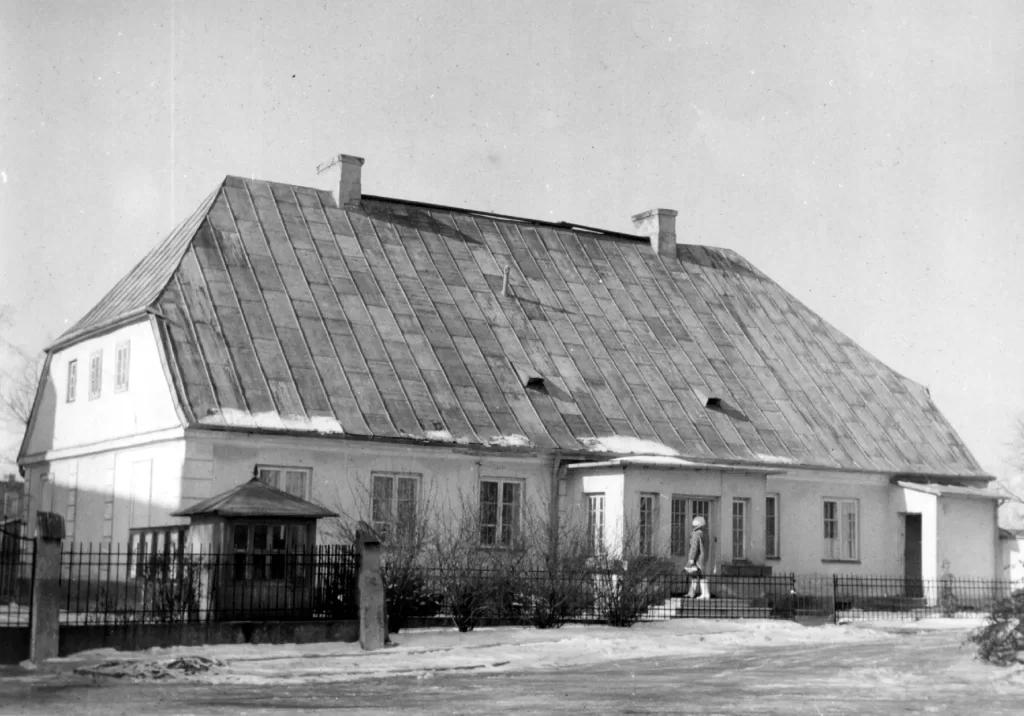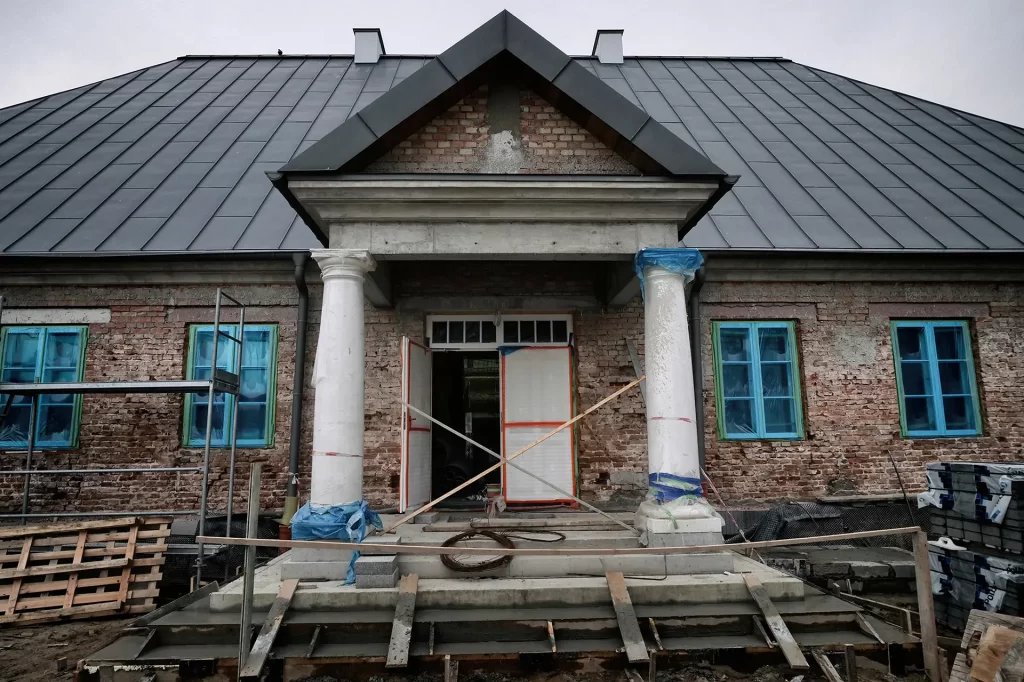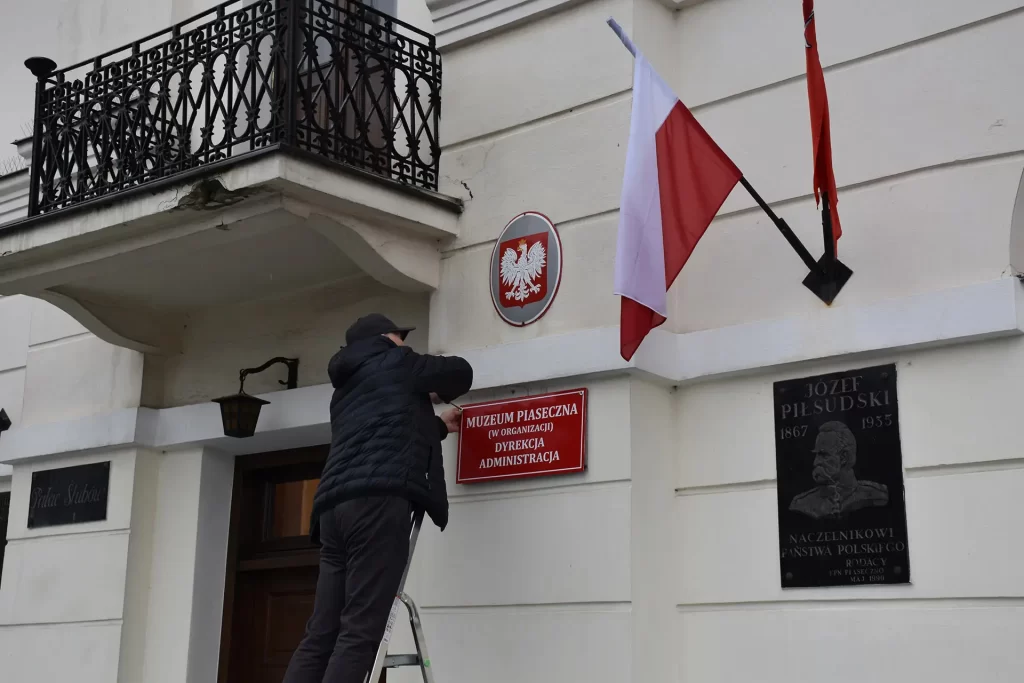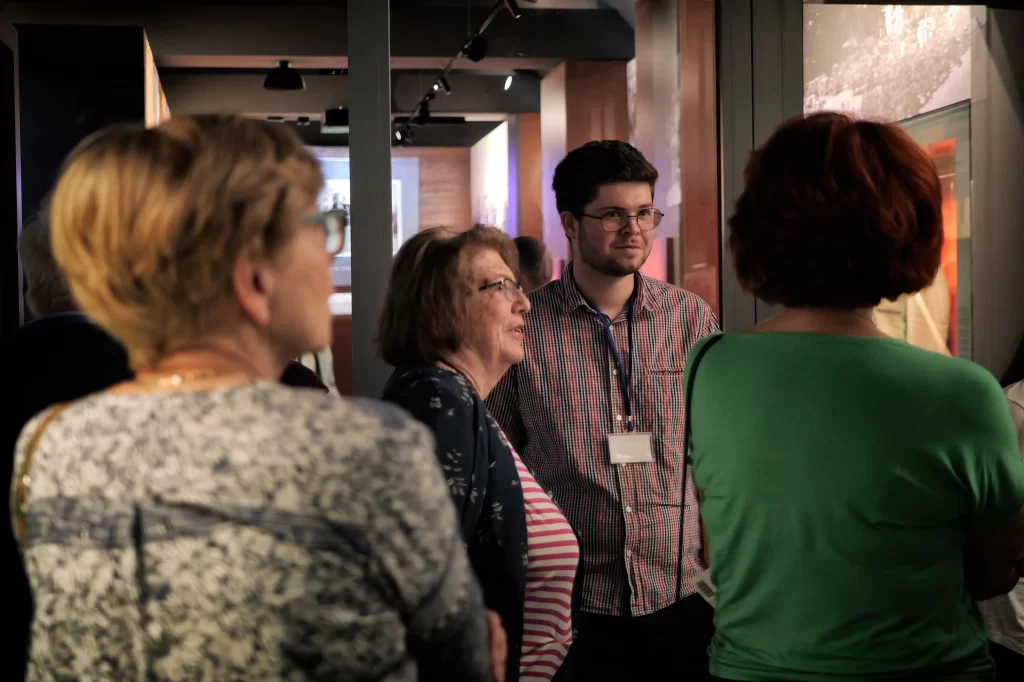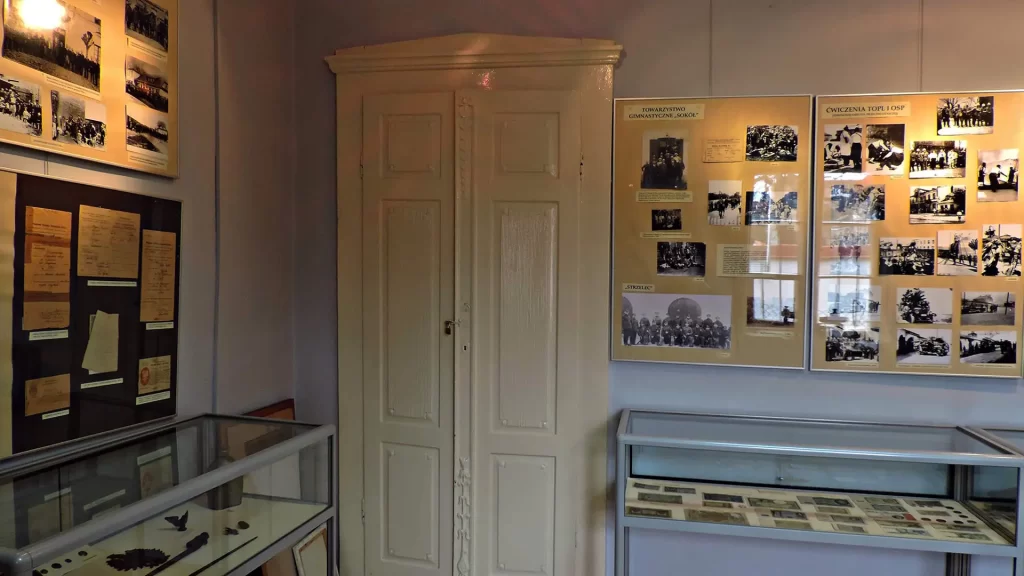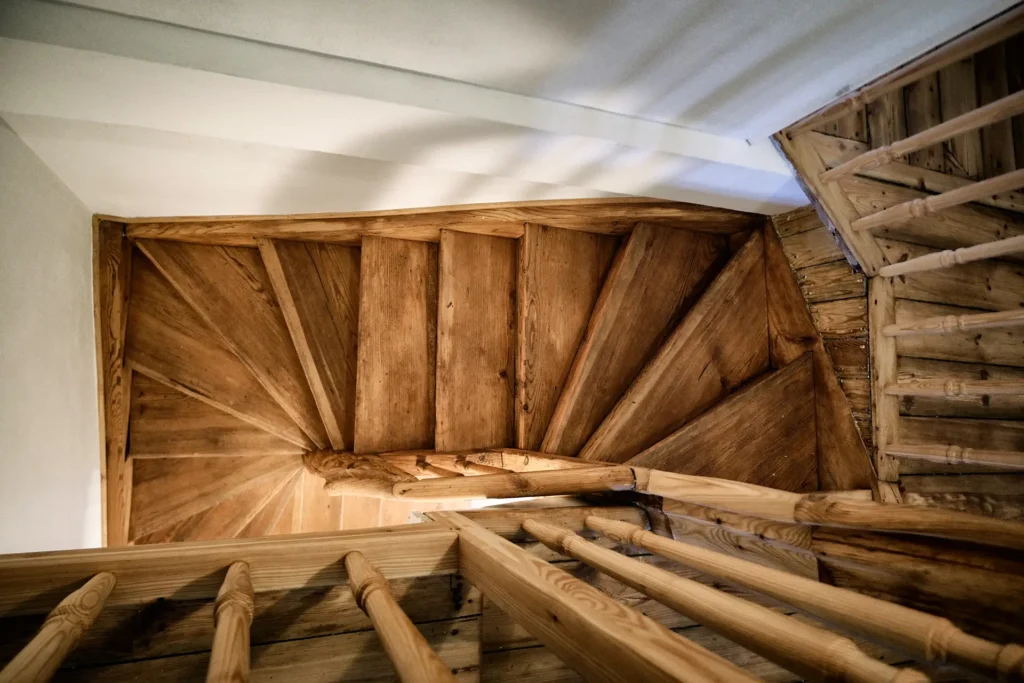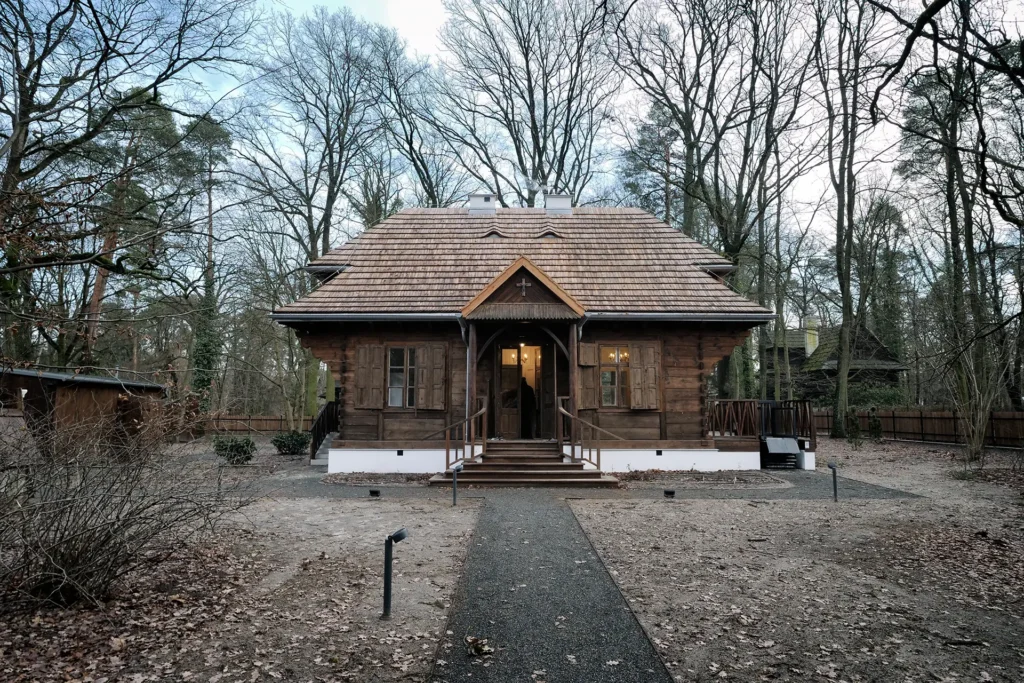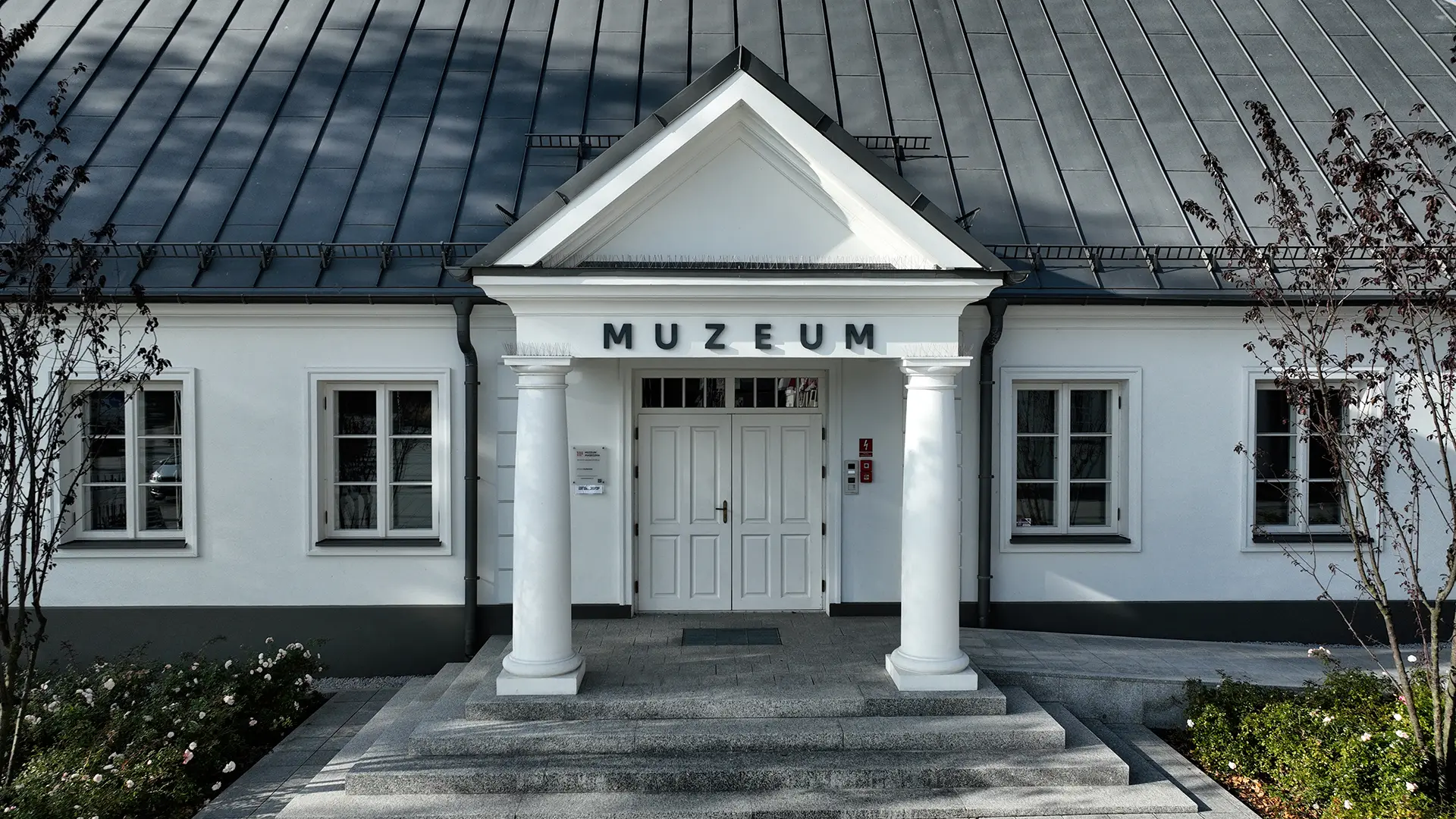
ABOUT THE MUSEUM
By a resolution of the Municipal Council of Piaseczno of 19 September 2018 a municipal cultural institution was established called the Piaseczno Museum (in the process of organisation), and the following year its statute was granted. As of 1 April 2022, Violetta Jarząbkowska was appointed as director and entrusted with the process of organising the museum. For the purposes of the process, Piaseczno Municipality provided office and administrative premises in the building of the former town hall, at 1 Piłsudski Square.
Misją Muzeum Piaseczna jest budowanie świadomości historycznej, integrowanie środowiska w oparciu o doświadczenia przeszłości.
W maju 2024 r. w budynku Plebanii udostępniono zwiedzającym pierwszą wystawę historyczną poświęconą historii miasta Piaseczna.
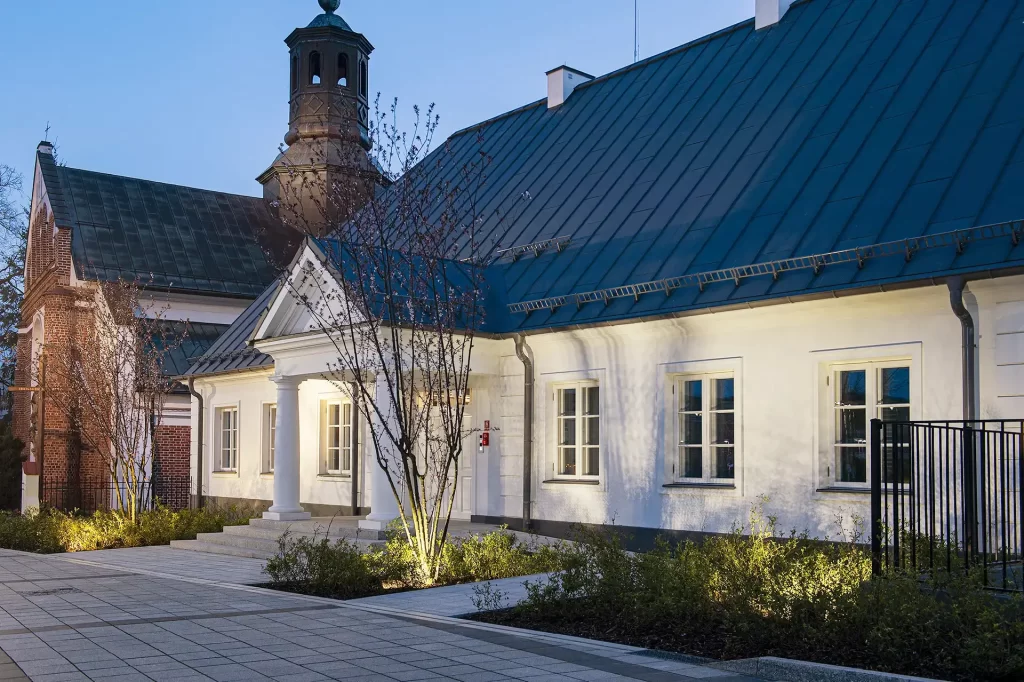
HISTORY OF THE MUSEUM IN PIASECZNO
The idea to establish a museum in Piaseczno dates back to the turn of the 1960s and 1970s. Starting in 1975, the Piaseczno Cultural Centre began preparations for the organisation of a Museum of Satire and Caricature in the building of the town hall. The plan was to collect the best works of famous satirists, primarily Polish. An exhibition of Eryk Lipiński’s works was planned for the official opening, scheduled for 1976. A few years later, in 1978, documentation was drawn up for the adaptation of a former fire station building on Puławska Street for the planned Memorial Museum. Inside, the following halls were planned: for the permanent exhibition, temporary exhibitions, a lecture hall and one for friends of Piaseczno.
Neither of these concepts was implemented. Despite this, the community of local history enthusiasts associated in the Society of Friends of Piaseczno was active in the town. They were striving for the creation of a museum already since 1969. At the time, the local authorities declared that the Poniatówka building, located in the park, would be used for this purpose. Although this plan was not carried out in the following decades, Jerzy Dusza, a regionalist and chronicler, gradually collected mementos related to the history of the town and the life of its inhabitants.
The long-standing efforts to establish a museum in Piaseczno succeeded at the beginning of the 21st century. Several rooms in the building of the Vicarage at 10 Piłsudski Square were allocated for exhibition purposes, thus the Regional Museum in Piaseczno, long awaited by its inhabitants, was given its seat. It was incorporated into the organisational structure of the then Cultural Facility, later transformed into the Cultural Centre. The basis of the collection was a collection of memorabilia donated by Jerzy Dusza. The opening of the facility took place on 5 November 2004, during the celebrations marking the 575th anniversary of Piaseczno being granted its municipal rights. In the following years, various activities included: permanent and temporary exhibitions, intimate music meetings, museum lessons and open-air events. Over time, it became apparent that the exhibition space was insufficient and that the Vicarage building needed renovation. This became the impetus for changes in the museum’s organisational structure.
Thanks to the efforts of Piaseczno Municipality, the project ‘Reconstruction and modernisation of the old Vicarage building in Piaseczno with a change of use to a museum and conference building’ was implemented and completed in 2023. It was also decided to incorporate into the structure of the Museum two more historic buildings - the Poniatówka manor house located in the Mazovian Princes’ Park in Piaseczno and the summer villa of the Zawadzki family, known as the House of ‘Zośka’ in Zalesie Dolne.
By a resolution of the Municipal Council of Piaseczno of 19 September 2018 a municipal cultural institution was established called the Piaseczno Museum (in the process of organisation), and the following year its statute was granted. As of 1 April 2022, Violetta Jarząbkowska was appointed as director and entrusted with the process of organising the museum. For the purposes of the process, Piaseczno Municipality provided office and administrative premises in the building of the former town hall, at 1 Piłsudski Square.
W maju 2024 r. w budynku Plebanii udostępniono zwiedzającym pierwszą wystawę historyczną poświęconą historii miasta Piaseczna.
MUSEUM FACILITIES
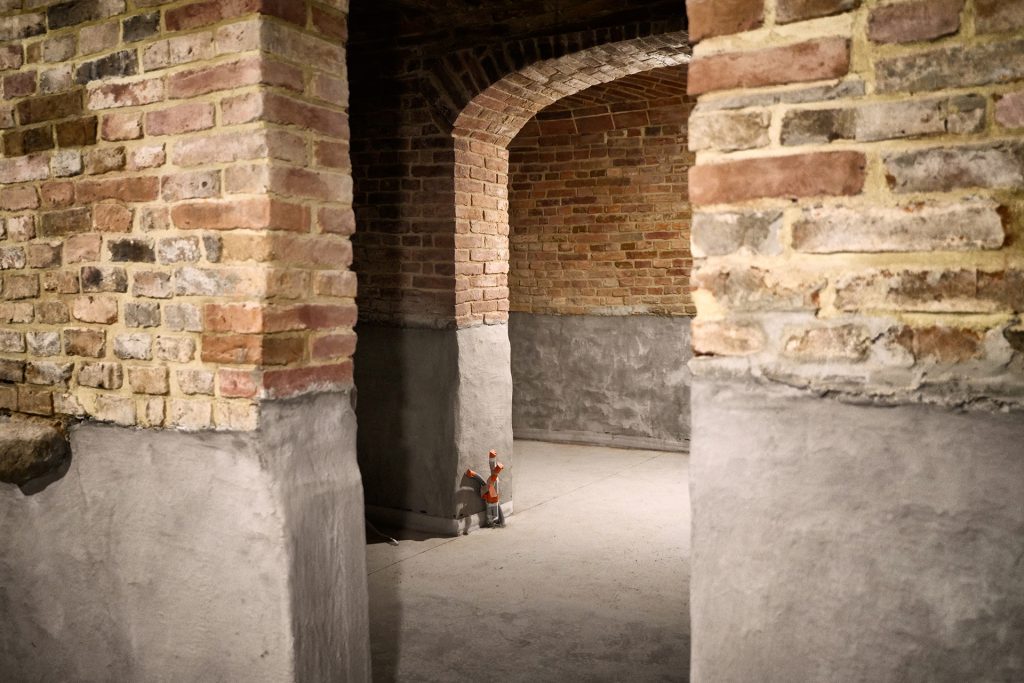
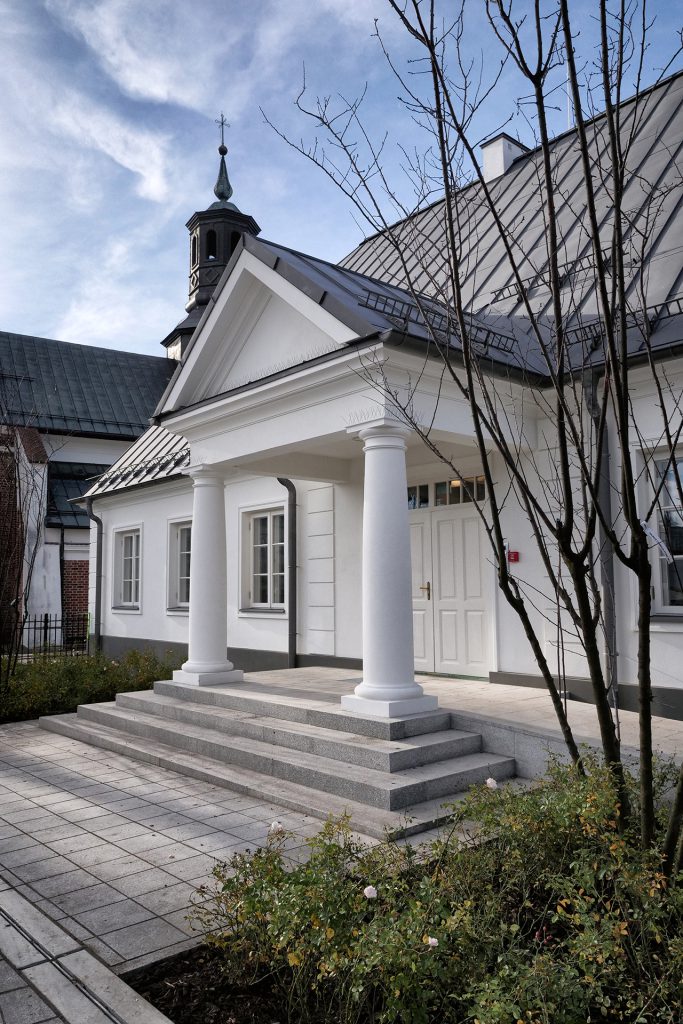
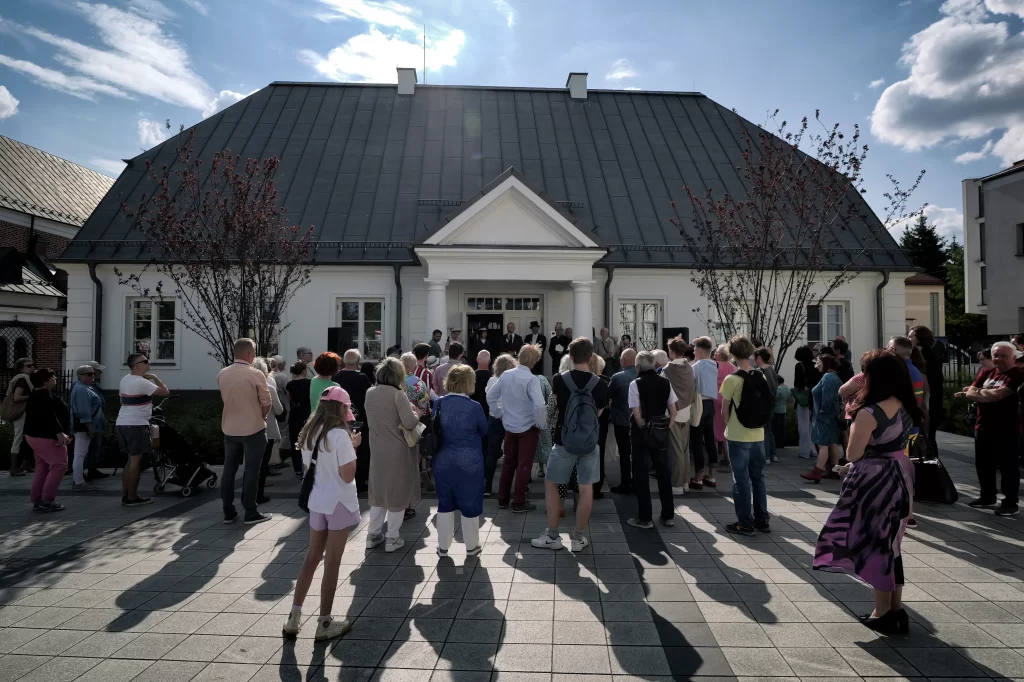
THE VICARAGE
The existence of the Vicarage building in Piaseczno is already mentioned in the survey of Mazovian Voivodeship of 1565. However, we do not know many details about its construction or size. A brief mention of the building was made in the inventory of the Piaseczno estate in 1774: ‘To this church belongs a wooden Vicarage with a grange, the land is one and a half voloks by Piaseczno, plus meadows, gardens and a parsons’ tithe’. In 1794 ‘To this church belongs a woden Vicarage with a grange, the land is one and a half voloks by Piaseczno, plus meadows, gardens and a parsons’ tithe’. W 1794 r. obiekt uległ zniszczeniu w wyniku walk podczas powstania kościuszkowskiego. Około 1800 r. w jego miejscu wzniesiono nowy budynek. Ufundowała go Ludwika z Melinów Ryxowa, przy zaangażowaniu swojego brata, proboszcza piaseczyńskiego – Franciszka Melinego. Plebania była murowanym, parterowym budynkiem o wysokim, dwuspadowym dachu. Na poddaszu znajdowała się przestrzeń mieszkalna. Okna na parterze posiadały opaski i zewnętrzne okiennice. W kolejnych dekadach Plebanię przebudowywano. Od frontu pojawił się drewniany ganek (zastąpiony w okresie powojennym murowanym), a od strony ogrodu weranda. W 1959 r. budynek wpisano do rejestru zabytków nieruchomych pod numerem 1078/202. Do lat 80. XX w. obiekt był wykorzystywany zgodnie z pierwotnym przeznaczeniem. Następnie został udostępniony gminie Piaseczno, z przeznaczeniem na cele społeczne. Od listopada 2004 r. w starej Plebanii funkcjonowało Muzeum Regionalne w Piasecznie, włączone w strukturę organizacyjną ówczesnego Ośrodka Kultury, przekształconego następnie w Centrum Kultury. Z czasem okazało się, że przestrzeń wystawiennicza jest niewystarczająca, a budynek wymaga remontu.
The project ‘Reconstruction and modernisation of the old Vicarage building in Piaseczno with a change of use to a museum and conference building’, carried out by Piaseczno Municipality, received funding from the European Regional Development Fund under Priority Axis V Environmentally Friendly Economy, Measure 5.3 Cultural Heritage, Project type: ‘Increase in regional tourism potential through the protection of historical buildings’ of the Regional Operational Programme of Mazovian Voivodeship for 2014–2020 in the amount of PLN 999,688.83. The total value of the investment was more than PLN 6.7 million.
The renovation was preceded by historical research, during which relics of the past were found, including old bricks stamps and signatures on which shed new light on the different periods of the building’s construction. The thorough renovation of the old Vicarage was carried out under the supervision of the Provincial Office for the Protection of Historical Monuments in Warsaw. Its main objective was to adapt the building for conference and museum purposes, while preserving historical elements. The old vaulted cellars were exposed in the basement. A column portico was added to the body of the building, which refers to the historic shape of the Vicarage and gives it the features of a Polish manor house, characteristic of 19th-century Polish architecture. All the solutions used were informed by conservation guidelines and the requirements of the National Institute of Museums and Collections Protection (now the National Institute of Museums). The building has been adapted to the needs of persons with disabilities.

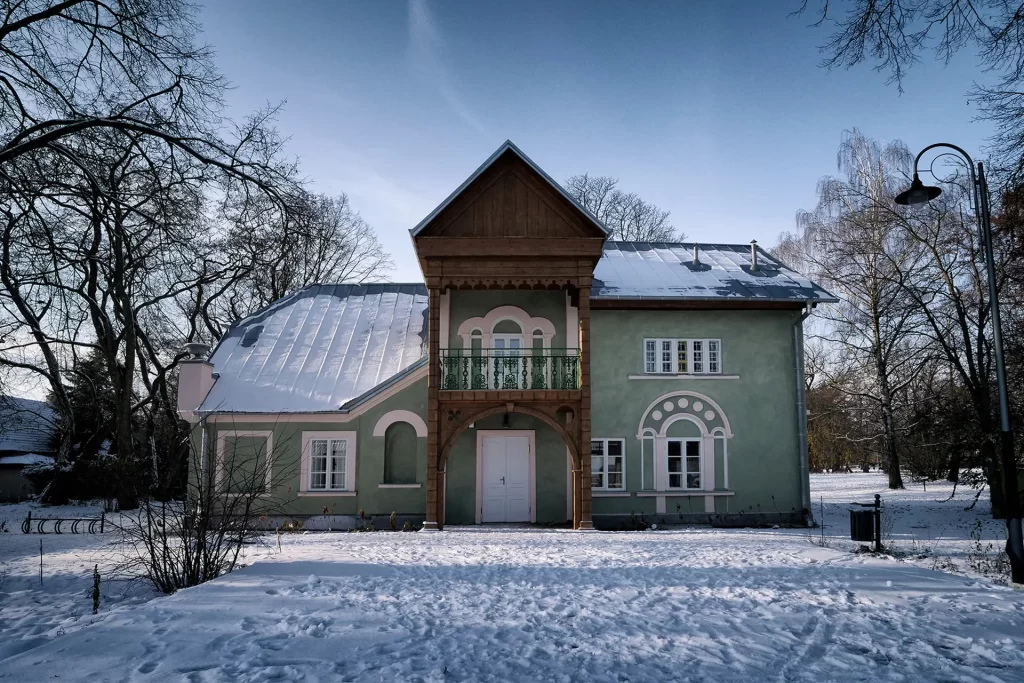
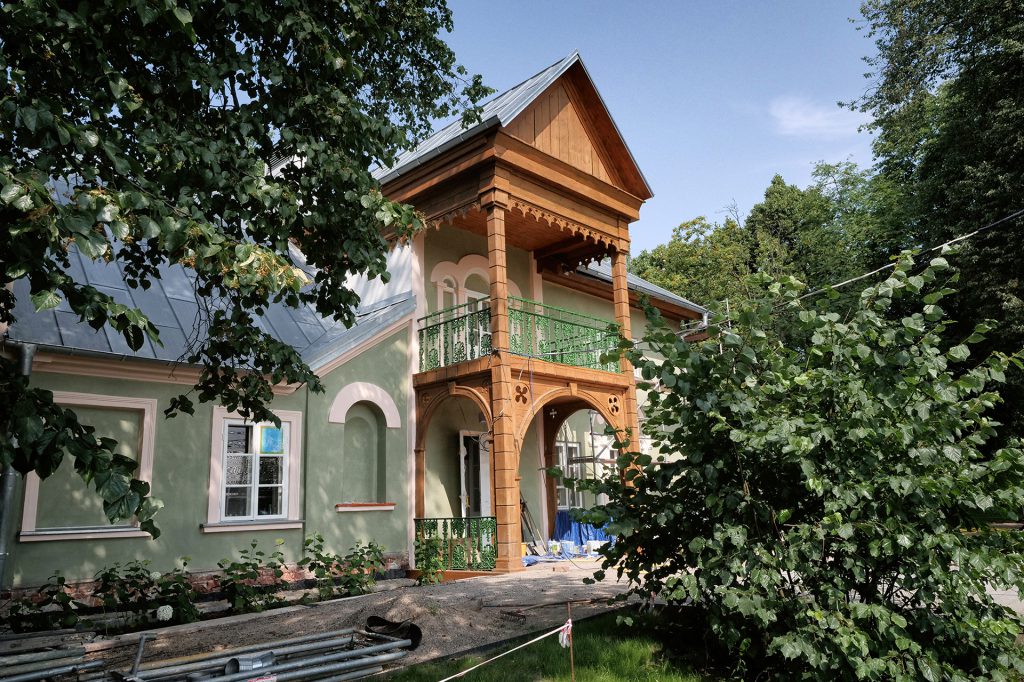
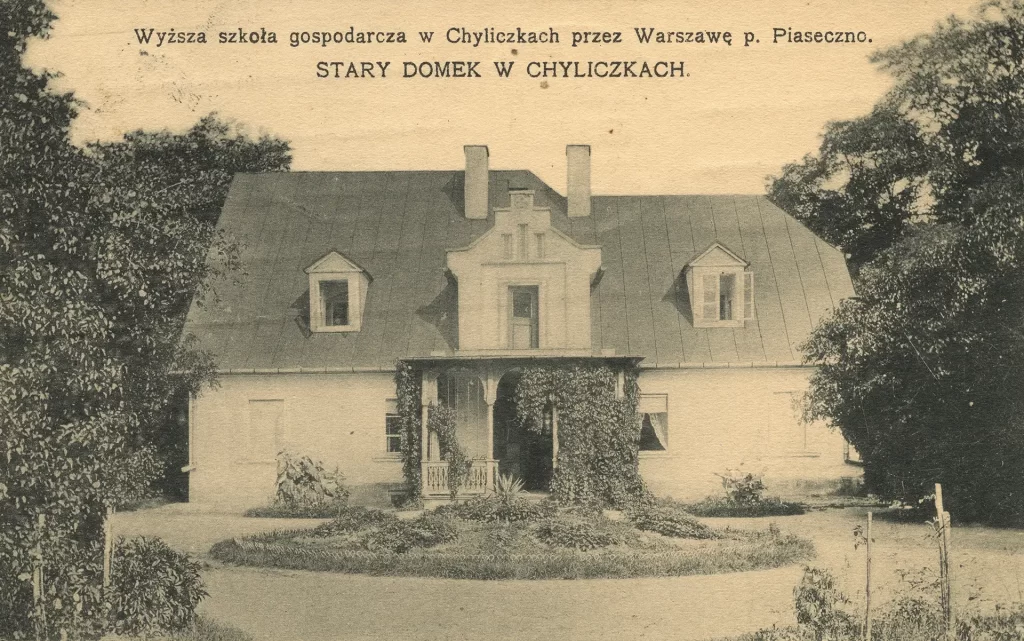
Poniatówka
The present shape of the Poniatówka manor house was given after 1891, when it was acquired by Countess Cecylia Plater-Zyberkówna in order to adapt it for the needs of the Economic Institution for Girls (since 1906 the Higher School of Household Economy), which was being organised. The earlier history of the building’s construction is not clear, while the latest research carried out in 2018 by the research team of the engineer architect Marek Barański, PhD and architect Paweł Kinser, MSc as well as documents found in the archives in Dresden, provided new and extremely interesting facts. During the research, attention was drawn, among other things, to the size of the bricks used in the basement and in the walls of the ground floor where bricks of a significantly larger size were used. Since in the walls of the ground floor the larger bricks were mixed with smaller, and damaged, bricks, the researchers took the liberty to assume two phases of the construction of the building - the research premise was accepted that part of the ground floor was built on the foundations and cellars of an earlier building. The Dresden documents, which include the layout and view of the ‘House of the Starost of Piaseczno’ building and a pencil sketch of the design of the garden of the Saxon palace, confirmed the identification of the original building as the manor house of the starost of Piaseczno built in Saxon times, more precisely in the 1740s. The then existing building was erected in a half-timbered construction, which is confirmed, for example, by the records of the treasury survey of the property of the Polish-Lithuanian Commonwealth carried out in 1765. Subsequently, a research analysis confirms that the manor house was rebuilt in the 1780s by the valet of King Stanisław August Poniatowski, Franciszek Ryx, who also held the office of Piaseczno starost since 1774. The walls were then decorated with frescoes featuring floral motifs, which were discovered during the most recent research. They indicate the work of painters from royal circles, which raises the profile of the Piaseczno paintings.
When Cecylia Plater-Zyberkówna acquired Poniatówka in 1891, she was forced to make changes to the body of the building, while the interiors were basically preserved in their previous form (only the staircase was transformed and a room was added on the north side).
The external architecture of the manor house underwent a major transformation - a new room was added to the attic, which affected the roof structure and its asymmetrical superstructure. A two-storey porch was erected in the eastern façade, a statue of Fortune was placed in a niche and the windows and panels were decorated with stuccoes. Significantly, during the work carried out by the Countess, the building acquired a new colour scheme: yellow and pink.
In 1981, Poniatówka was entered in the register of monuments and is subject to conservation protection.
Between 2022 and 2024, thorough modernisation works were carried out on the building under the title ‘Renovation and reconstruction of the Poniatówka building in the Municipal Park in Piaseczno, together with landscaping and the construction of connections to the building’, with the aim of restoring the manor house to its former splendour and adapting it into a museum and educational facility combined with a café. As part of the ‘Instrument for supporting tasks important for the cohesive development of Mazovian Voivodeship’, in August 2022, Piaseczno Municipality received funding in the amount of PLN 3.6 million.
THE HOUSE OF ‘ZOŚKA’
In 1925, the parcelling-out of land near Piaseczno began, belonging to Tadeusz Zawadzki, the owner of Wólka Kozodawska, and Adam Branicki, the owner of the Wilanów estate. In this way, summer resorts were created, including the Zalesie Forest and the Zalesie Garden, which were laid out along the main pathways. Common space and nature were taken care of. Tree felling was kept to a minimum. Officials, intellectuals or artists were often brought to the summerhouses.
W 1929 r. drewnianą willę w Zalesiu Dolnym, przy dzisiejszej ul. Królowej Jadwigi 11, nabył rektor Politechniki Warszawskiej prof. Józef Zawadzki. Budynek, będący przykładem architektury letniskowej w stylu narodowym, został wzniesiony dla Józefa i Haliny Radwanów. Według przekazów zaprojektował go architekt Karol Siciński (1884–1965), znany z powojennej odbudowy Kazimierza Dolnego. To jemu obiekt zawdzięcza walory artystyczne, takie jak proporcje bryły, czy detale snycerskie fasady. Do 1939 r. willa pełniła dla rodziny Zawadzkich funkcję letniskową. Czas spędzał w niej m.in. Tadeusz Zawadzki „Zośka” (harcmistrz i podporucznik Armii Krajowej, który poległ w sierpniu 1943 r. w czasie akcji „Taśma”), znany powszechnie jako bohater książki Aleksandra Kamińskiego „Kamienie na szaniec”.
The villa’s fate changed with the outbreak of the Second World War, when the building was also used for underground purposes. Meetings of the Polish Underground State and meetings of the Grey Ranks (a paramilitary scouting association) were held there. Among those who passed through the building were the writer and co-founder of the Grey Ranks Aleksander Kamiński, the head of the organisation Stanisław ‘Orsza’ Broniewski, the head of the Grey Ranks Headquarters Piotr Pomian, and the commander of the Union of Youth Struggle Stefan ‘Grot’ Rowecki.
In 1981, as a result of a donation, the building became the property of the Congregation of the Ursuline Sisters of the Agonising Heart of Jesus. From 2011, the building was owned by a private individual, after which it was acquired by Piaseczno Municipality in 2017.
W 2009 r. drewniana willa, określana jako Dom „Zośki”, została wpisana do rejestru zabytków nieruchomych województwa mazowieckiego. Na terenie posesji zachowała się studnia, a przy willi rozpościera się pomnik przyrody – około trzystuletni dąb. Postać Tadeusza Zawadzkiego „Zośki” upamiętnia kamień ustawiony w 1977 r.
Thanks to the efforts of Piaseczno Municipality, a functional-utility programme was drawn up, which became the basis for planning the renovation of the building. It was decided to adapt it for cultural, educational and museum functions. As part of subsequent activities, the condition of the building was examined, the wooden elements secured and a modernisation project prepared in agreement with the Mazovian Provincial Conservator of Monuments.
In 2023, modernisation work began on the House of ‘Zośka’, supported by a grant of PLN 1 million from the Most the Most Foundation. After renovation, the House will become one of the facilities of the Piaseczno Museum and will house a permanent exhibition devoted to the history of the Zawadzki family and the activities of the Grey Ranks.

